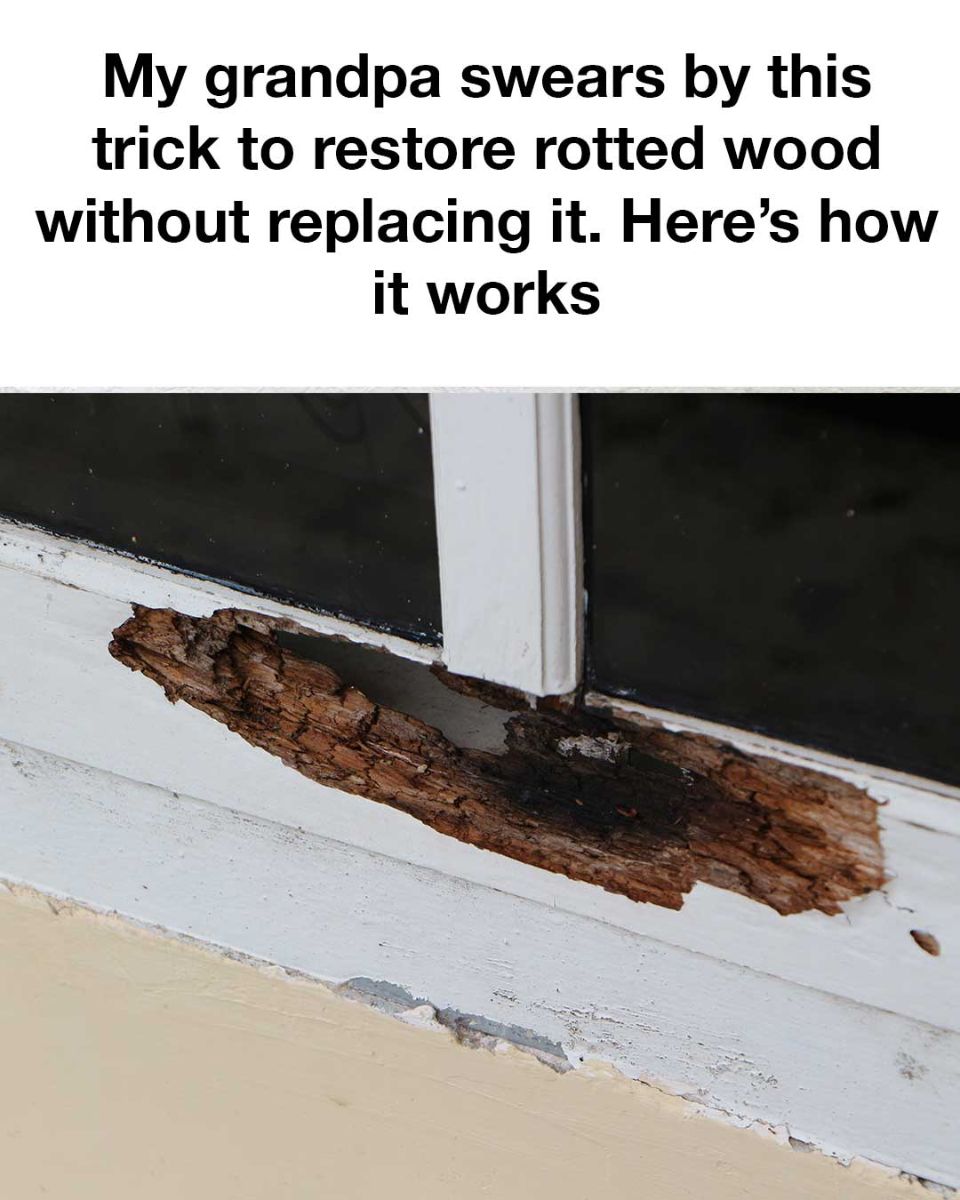Wood has been a staple material for furniture, floors, and various structures for centuries. However, over time, it can succumb to the effects of rot, leading many to believe that replacement is the only viable option. My grandpa, with his vast experience in woodworking and home repairs, swears by a nifty trick to restore rotted wood without having to replace it entirely. Here’s how it works.
Understanding Wood Rot and Its Causes
Wood rot typically occurs due to a fungal infection caused by moisture. There are two types of wood rot: dry rot and wet rot. Dry rot happens when fungi damage the wood in environments that are relatively dry, while wet rot takes place in damp conditions. Common causes include water leaks, poor ventilation, and prolonged exposure to moisture.
Materials and Tools Needed
To restore rotted wood using my grandpa’s method, you’ll need the following materials and tools: epoxy wood consolidant, wood filler, a utility knife, a chisel, a putty knife, protective gloves, safety goggles, sandpaper, and a paintbrush.
Detailed Step-by-Step Process
1. Identify the Rot: First, identify the extent of the wood rot. Use a utility knife or chisel to probe the affected area.
2. Clean and Remove Rotted Wood: Clear out the rotted wood using the chisel. Ensure you remove all the decayed material.
3. Apply Epoxy Wood Consolidant: Mix and apply the epoxy wood consolidant to the cleaned area. This will help to solidify and stabilize the remaining wood. Let it cure as per the manufacturer’s instructions.
4. Fill the Area: Once the consolidant has cured, apply wood filler to the area to restore its original shape. Use a putty knife to smooth it out.
5. Sand and Finish: After the filler has dried, sand the area until smooth. Finish by painting or staining to match the rest of the wood.
Benefits of This Wood Restoration Method
This method is cost-effective, as it saves both time and money compared to replacing entire wooden structures. It also extends the life of the wood, is relatively easy to perform even for DIY enthusiasts, and minimizes waste, making it environmentally friendly.
Precautions and Safety Measures
Always wear protective gloves and safety goggles when handling chemicals like epoxy and wood filler. Work in a well-ventilated area to avoid inhaling any fumes. Make sure to follow the manufacturer’s instructions for all products used in the process.
Expert Tips from Grandpa
Next Page

